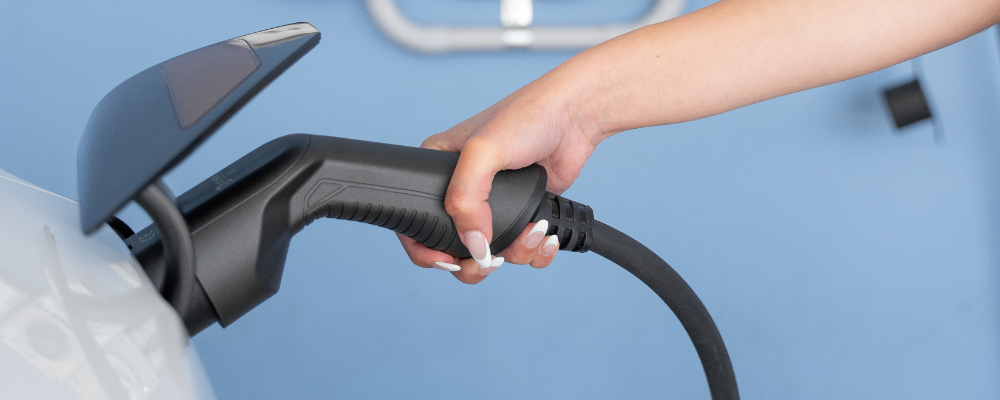Tips for charging electric vehicles

With a rapidly evolving society, technology is changing and upgrading, becoming more accessible and easing the lives of those who use it. The progress made in transportation has increased tremendously in the last few decades with the first introduction of Electric Vehicles (EVs) to Australia back in 2008 with Australia’s own, Blade Electron. Since then, society’s views on sustainability initiatives and EVs have evolved with many car buyers turning to EVs when making car purchasing decisions.
As many Australians make the switch from a petrol to an electric car, a common question is how they ensure they keep their car charged and ready for daily use or longer road trips. Fortunately, this guide will give you all the tips you need for charging your EV.
- Know Your Charging Options:
Before making an EV purchase it is important to revise your charging options. Are you planning to install a home charger? Use a level 1 portable charger? Or rely on public DC Charging options? DC Fast Charging, also known as Level 3 chargers, are the fastest kind of EV charger and are typically found at public charging stations along motorways. Shop our extensive range of DC chargers here. Whatever your choice is, ensure that you are aware of the charging requirements and speeds of each option.
- Invest in Home Charging Infrastructure:
Look around your home for a suitable place to install an at-home charger; an accessible garage or driveway is best. This allows you to charge your EV overnight when electricity rates may be lower and ensures you wake up to a full battery. A popular charging option to install within your home would be the Ocular IQ Solar; a Level 2 charging station. This charger has a faster charging speed than a regular Level 1 charger and allows you to charge your EV up to 8 times faster. The Ocular IQ Solar can operate as a standard EV charger and through its solar function can utilise your home’s solar panels charging your EV with 100% green energy.
- Know your EVs range:
It is important to be aware of the range of your EV when planning your trips. It is essential to ensure that you recharge your EV regularly and keep in mind that factors such as the weather, your driving speed, and the terrain may affect your range. By ensuring that you are aware of these factors you can create a clear plan on where to recharge your EV and minimise unexpected stops in your journey. For more information take a read through our previous blog on how to conquer EV road trips.
- Plan Your Charging Stops:
Planning your stops before beginning a long drive can save you time and hassle on the road. By using apps or websites such as PlugShare to plan your next charge you help to ensure your EV remains ready for the next leg of your trip. These apps display charger availability and allow you to check that the charger is compatible with your vehicle.
- Using Public Charging Stations Wisely:
Public charging stations are an excellent form of charging when on the road, although it is important to use these stations wisely and with others in mind. Charging stations can vary in terms of charging speeds and availability. Popular fast chargers can top up your EV quickly but may be occupied during peak times, plan to charge your EV during off-peak periods if possible. It is important to ensure you are respectful of others as well and avoid leaving your EV parked at a charging point once it has finished charging. Many EVs come with an app that allows you to view charging progress on the display monitor within your vehicle. This can help you track and monitor the charging process remotely and will alert you once completed. This can help ensure you have sufficient time to move your EV to allow the next person to charge their vehicle.
- Be Mindful of Battery Health:
Just like your mobile phone, it is important to avoid charging your EV to 100% on every occasion or leaving it plugged in after it has finished. This will degrade the battery over time. Instead, attempt to keep your battery between 20% and 80% at all times. Take into consideration regenerative braking, which is the process of converting kinetic energy into electrical energy to recharge the battery as your vehicle slows down. This process can help lengthen your EV’s range.
- Stay Informed and Up to Date:
Think about joining EV communities online or within your local area. These communities can provide valuable information and allow you to stay informed concerning new advancements in EV technology or charging infrastructure. You are also able to remain up to date on helpful insights or even the best charging stations within your area.
- Be prepared for emergencies:
Consider purchasing essential charging accessories that can be stored in your vehicle and used in emergency situations. Accessories such as charging cables and adapters can be discretely stored under seats in our Portable EV Cable Bag to ensure your vehicle remains safe and secure. It is important to ensure you always have a cable on you in case of emergency or if a public charging station does not have a compatible cable.
After reading these top tips you should now be well equipped and confident in your charging journey, both at home and in a public setting. Happy Charging!
For more information and good reads, visit our blog here.
Have any questions? Contact us:
1300 406 210



